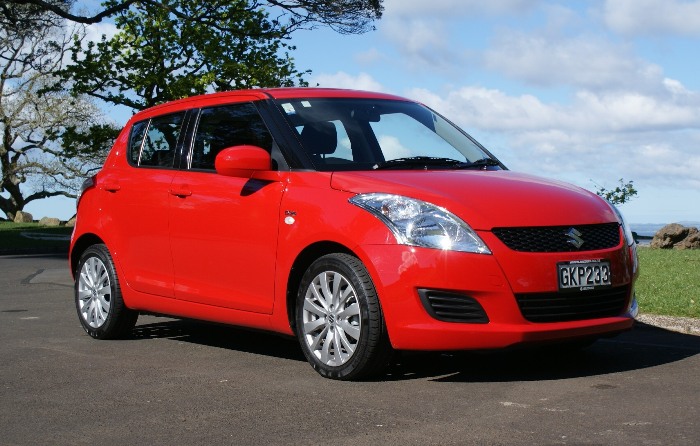
Car reviews
Read our expert car reviews - where we give insight into the latest vehicles to hit our roads.
26 October 2012
The stick shifter might be a slight hindrance for NZ buyers, who are more inclined to opt for automatic transmissions, but on fuel consumption alone and being the most economical car in the Swift range, it might make sense for those with a liking for miserly fuel consumption.

The Suzuki Swift might be a small car but its huge presence on New Zealand roads is a testament to its popularity among Kiwi drivers. The much loved small hatchback has been around for some time but it still attracts buyers to Suzuki showrooms; so much that it continues to top the new vehicle sales ladder, month in, month out.
Until now, only two petrol engine options have been available for the Swift in New Zealand; the standard 1.4L powerplant and a 1.6L petrol which powers the Swift Sport. Suzuki has been toying with the idea of bringing a diesel Swift to New Zealand for some time as even though the Swift is known for its frugality, the introduction of a diesel version pushes the economy figure right into hybrid territory.
Outside, the diesel Swift is indistinguishable from the petrol versions, with the only noticeable difference being the DDiS badges on the front fenders.
The cabin area has a contemporary feel with dark grey and black material cover the seats. Luggage space is a meagre 211 litres but the 60:40 split rear seats can be folded, almost flat, to free up a useful 528 litres of load area.
The Swift diesel is fitted with 16-inch alloy wheel rims and the suspension setup feels quite stiff compared to the standard 1.4L model, making driving fun but not compromising on comfort.
The 1.3L diesel motor is designed by the Italian car maker Fiat but built under license by Suzuki. It delivers 55kW of power at 4000rpm and 190Nm torque at 1750rpm, giving the car a 31 percent boost in torque over the 1.4L petrol powered model. Suzuki claims the little diesel engine will consume fuel at a rate of 4.2L per 100km in a combined cycle, so with a full 42L tank of fuel and a feather-light right foot on the accelerator pedal, it can reach as much as 1000km before a top up is necessary. However, Suzuki are realistic and expect the average driver will achieve around 800km on a tank.
The five-speed manual transmission is smooth to operate and the nicely weighted clutch pedal makes pulling away on an incline a breeze.
On initial start up, and when the motor is at idle, there is noticeable engine clatter which makes the driver aware of what’s cooking under the hood but when the car is on the move, while still not the quietest of powerplants, noise level is more acceptable. The engine delivers plenty of useful torque and responds well under acceleration, with emission levels being a minuscule 109g of CO2, meeting stringent Euro 5 emission standards.
Passive safety comes in the form of seven airbags and two ISOFIX child seat anchorage points in the rear and the car has been awarded the maximum five-star Euro NCAP crash test rating. Active safety features include Electronic Brake-force Distribution (EBD), Electronic Stability Programme (ESP) and Brake Assist (BA).
The Swift diesel retails for $25,990 with only one five-speed manual-transmission option. The stick shifter might be a slight hindrance for NZ buyers, who are more inclined to opt for automatic transmissions, but on fuel consumption alone and being the most economical car in the Swift range, it might make sense for those with a liking for miserly fuel consumption.
So while big fleet buyers, clocking up high mileage and looking to lower running costs might embrace the diesel option, our feeling is that private buyers travelling average annual mileages are more likely to opt for the 1.4 GL manual and save themselves $5,500.